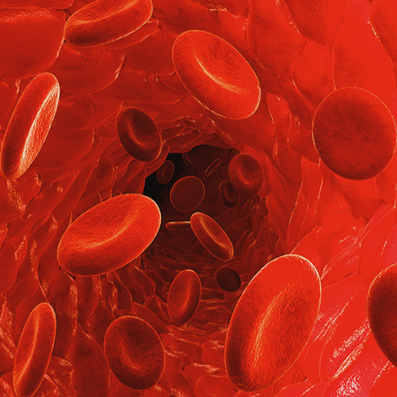
Although potentially cancer-causing mutations in our DNA are usually fixed by our bodies, they can slip through the net and begin to build up, which means we accumulate mutations in our cells as we age.
If a cell accumulates enough mutations, it may begin to divide and multiply uncontrollably, thus turning into cancer.
But the accumulation of mutations with age alone does not fully explain why we get more cancer as we get older.
Ageing in normal cells and tissues makes it easier for cancer cells to take root. But how this happens can differ between different tissues. For example, in blood stem cells, ageing reduces their ability to replenish themselves, and mutated cells begin to dominate ‘normal’ cells, increasing the likelihood of a blood cancer like leukaemia developing.
If we had a way of slowing down ageing, we could both keep cells healthier for longer and reduce their cancer risk. The problem is that we don’t fully understand the biological processes that cause this potentially dangerous dysfunction in aged blood stem cells as we age.
But that could be about to change.
New research from the Weatherall Institute of Molecular Medicine at the University of Oxford, and the Wellcome-MRC Cambridge Stem Cell Institute at the University of Cambridge has shown that a molecule called formaldehyde causes DNA damage to blood stem cells, which can accelerate their ageing and increase the likelihood of blood cancers.
Most importantly, this research now identifies a common link between DNA damage in blood cancer and ageing.
Previous research, led by our chief scientist Professor KJ Patel, had identified aldehydes, the group of molecules to which formaldehyde belongs, as a source of DNA damage that causes mutations in blood stem cells and increases blood cancers.
Now, this latest research shows that the DNA damage arising from formaldehyde can also age the blood stem cells.
Therefore, if we can find ways to limit formaldehyde production in our bodies, we may be able to slow, or even fully stop, this DNA damage occurring. Doing that could slow the ageing process of these cells and could be a step toward preventing certain blood cancers.
Formaldehyde is commonly used as a chemical preservative, safely kept in containers like the specimen jars at the Natural History Museum. So how do we get exposed to formaldehyde?
“It turns out our own body’s metabolism produces far more formaldehyde than most of us can ever be exposed to from the environment,” says Dr Meng Wang, who co-led the new study.
“So, in this work, we wanted to ask whether the formaldehyde generated by our metabolism can cause significant damage to DNA, and more importantly, lead to detrimental effects.’”
Our bodies have natural defence mechanisms against the harmful effects of formaldehyde. One in the form of enzymes, proteins that can break formaldehyde down into non-toxic products, and another in DNA repair pathways that undo the DNA damage inflicted by formaldehyde.
So, to determine the potential effects of formaldehyde accumulation throughout our lifetime, Wang and his colleagues switched off these defence mechanisms in the blood stem cells of mice. And in doing so, it was like they pressed fast forward.
They found that allowing formaldehyde to accumulate in the blood stem cells of these mice caused the cells to age much faster than usual. The blood stem cells of an 8-week-old mouse looked like those of a 2-year-old mouse and were functioning like old cells too.
It seemed to confirm a long-held theory that DNA damage is a key driver of ageing.
“
